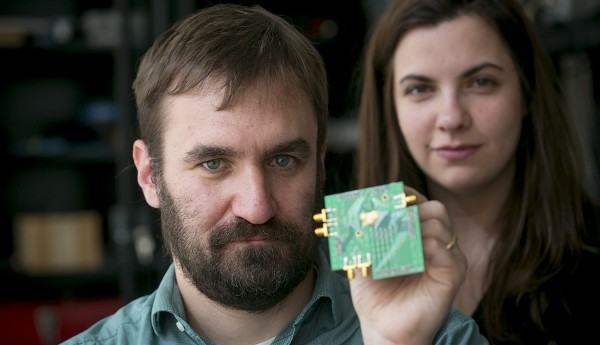Two-way radio on a single chip
on

Two-way communications requires – obviously – both transmit as well as receive capability. However, when we want to fit this into the one device, a filter is required between the transmit and receive circuits to separate these signals from each other. Without a reliable filter, communications would be impossible. The transmitted signal is significantly stronger than the received signal – and that is exactly the problem. However, researchers from Cornell University have found a solution for this.
The separation of the transmit and receive bands is already difficult enough, but the problem becomes even bigger because of the greatly increased number of bands in modern devices – and each of these bands (Bluetooth, WiFi, to name just a couple) requires a filter that prevents the weak received signal from being swamped by the large transmit signal.
The research team under the leadership of professor Al Molnar have come up with a clever way to keep the signals apart. The trick is that the transmitter actually consists of a series of six 'sub-transmitters' which are connected to an artificial transmission line. Each sub-transmitter sends its signal at regular intervals, and these signals a weighted such that they produce an RF-signal in the forward direction (towards the antenna port) while at the same time they cancel each other in the opposite direction (towards to receiver).
Because the individual outputs are programmable, this adding or subtracting of these signals can be tuned over a wide frequency range. In one direction it operates as a filter and in the other direction as an amplifier.
The research is described in the IEEE Journal of Solid State Physics.


Discussion (0 comments)